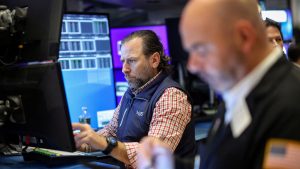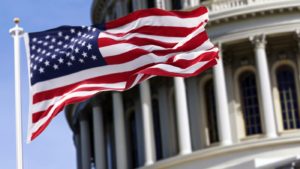The security badges are beeping again. The revolving doors are spinning for the first time in more than a year and a half. The building lobbies no longer resemble nuclear fallout zones. Yes, the Great Return to the Office is finally here.
But as companies ask their employees, “Will I see you on Monday morning?” the COVID-rattled staffers often have a question of their own.
“What’s for lunch?”
Among the many, many things the pandemic has changed forever — or at least speeded up — is the whole gestalt of office cuisine. As nourishment. As a perk. As a lure for drawing people back to their Aeron chairs and open-plan workspaces after 20 months in yoga pants and T-shirts.
As for the bagels and cream cheese and old-style deli platters that used to be such a conference-room staple? Well, they just don’t cut it anymore. Returning employees, who are suddenly learning they have fresh leverage in a post-COVID, labor-stressed economy, are turning up their noses at what used to pass for office food.
Also see: With potential fines on the menu, restaurants grapple with New York City’s vaccination mandates
This week, when employees officially return to the Lower Fifth Avenue offices of the PR firm DKC, that will mean once-a-week lunches on the company from the New York-based fast-casual salad chain Chopt.
“It’s a wrap for the wrap,” said DKC President Sean Cassidy. “We want to nicely welcome our employees and clients back to the office after so many months working remotely. Toothpick-skewered cheese cubes and tubs of cream cheese on chrome-plated plastic trays just feels a tad inconsistent with the welcome-back sentiment we are trying to convey.”
Chopt opened its first location (of 75 nationwide) on Union Square in 2001, just in time for 9/11. So dealing with major upheaval goes back to the company’s earliest days. “We are extremely excited to see so much life returning to the city,” said Chopt CEO Nick Marsh. “But many changes that were already in motion have accelerated, including the kinds of perks people want. Today’s office workers, who are just getting comfortable coming back to work, they’re not looking for ping-pong tables anymore. And large platters of shareable food is no longer acceptable as the catered lunch.”
Chopt’s business, like everyone else’s in the food-service industry, took a punishing hit during early COVID. All Chopt locations closed at least for a short time, though business has gradually improved with the New York City economy. “We’re at about 80% now,” Marsh said.
One change at Chopt: New group-ordering technology allows each office eater to click on a link and make an individual selection, while all the food is paid for and delivered together. “No one has to run around the office handwriting people’s orders,” Marsh said. “And when your salad arrives, it’s labeled with your name.”
When it comes to eating, as with other parts of daily life, COVID’s impact has often pulled in several directions at once. While many people say the pandemic has made them more health conscious, they’re also admitting to the “COVID 15” or 20 or 25 or 30, the extra pounds they packed on by spending so much time inside, close to the kitchen and far from the gym.
Also read: Ready to return to the office? Spit in this vial, please.
Now that the workplaces are filling up again, it’s anyone’s guess which force wins that dietary tug of war.
For its part, the U.S. Centers for Disease Control and Prevention has an all-you-can-eat buffet of suggestions and advice for bar and restaurant owners, though bellying up to an all-you-can-eat buffet is definitely on the X-list now. Under Modified Layouts and Procedures, the federal health officials say: “Avoid offering any self-serve food or drink options, such as buffets, salad bars and drink stations. This limits the use of shared serving utensils, handles, buttons or touchscreens.”
They don’t mention shared office chow-downs, but the same logic surely applies.
Also on MarketWatch: COVID caused more than 3 million Americans to retire early, a new Fed analysis finds
Luckily, at fast-casual places like Chopt, Panera Bread and Chipotle
CMG,
staffers assemble the salad at the customers direction, which health experts call far safer than the traditional serve-yourself salad bars, a familiar pre-COVID sight at New York delis and many supermarkets. Regardless, these places do seem to be gaining on traditional sit-down restaurants. In a recent study of how the pandemic has changed dining habits, the Florida-based corporate marketing company Acosta found that 53% of consumers are dining in restaurants less often than before and 27% are ordering more takeout.
“One thing we know for sure,” said DKC’s Cassidy. “These trends are changing, and businesses have to stay in front of them.”
Ellis Henican is an author based in New York City and a former newspaper columnist.
This post was originally published on Market Watch





